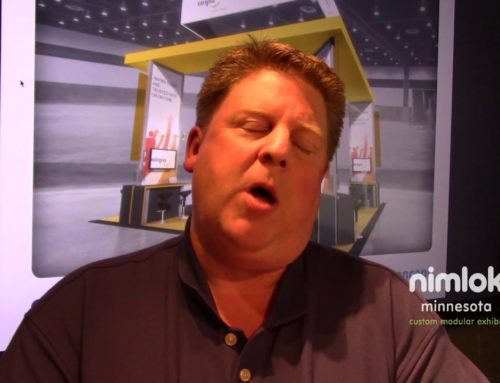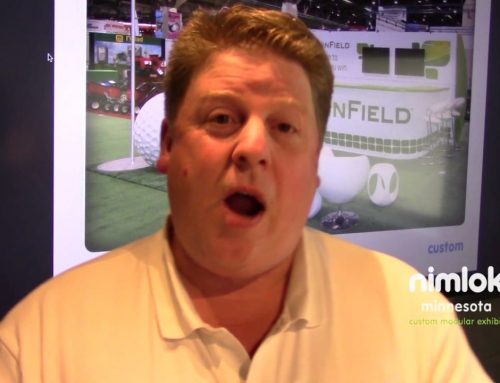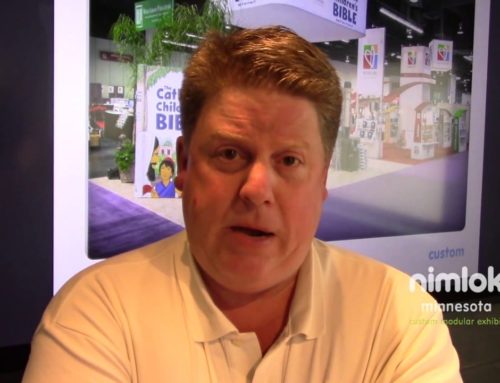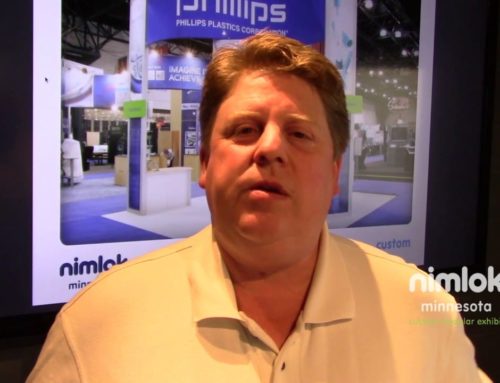Joe Greeley here, Nimlok Minnesota.
Here’s what’s on my mind – Goals vs. Gluten.
Some of you, we know, already have rock solid, measurable, achievable goals within your exhibit program. So a little bit of this may seem obvious.
However, too often we hear just the opposite. We hear, “Hey you know what Joe? I’m embarrassed to say this, but we don’t have any goals at all. We don’t really track anything – we just go to go.” So you might find some value in this. Let’s start with a story about just getting ready to go to a show.
You’re getting ready to go to your 2016 Emergency Roadkill Critter Response Expo. It’s in Las Vegas. You’re sending your 20 x 20. You think to yourself, “Okay, let’s just get there, just go through the details. Call Nimlok Minnesota, have them handle the booth and all the details – get the booth there set up and so on. All right, now I gotta get my people there. Airline reservations, hotels for everybody, and then I gotta get Bob. Bob needs a gluten-free menu. If Bob has gluten, Bob gets gassy. If Bob gets gassy, it’s a lose-lose for everybody!” We all know a Bob, don’t we?
Then you have to get some graphics made for a new Flex Capacitor Model. But all I’m hearing here, is details. There is no real mention of goals. There are no real goals as far as what do we want on the outcome. What are we hoping to achieve by attending this event? Or have we confused the goals with the details?
I like to think of it this way – this is one of the biggest, and most expensive client meetings we’re going to have all year. When I go to a client meeting, I think to myself, “Do I have my strategy nailed down? Do I have my talking points nailed down? I have my power point – is that rock solid?” I’m usually not thinking, “Hmmm, what kind of coffee should I serve – Folgers or Maxwell House?” That’s just a detail. I pick one, but I’m over it. I’m looking at the big goal. I’m looking at what I really want to achieve.
So let’s use a couple of quick examples as far as goals and goal setting. I’ll start with an obvious one, we’ll look at leads. Oh, and by the way, not every goal has to be bottom-line driven. However, your CEO and CFO may disagree with that. But, let’s look at leads. I know leads is an obvious one; everyone wants leads, everybody wants more leads. What I’m suggesting, is put the microscope to your lead program and what you want. For instance, if you haven’t been tracking them, you have no starting point. Let’s come up with something that we think is achievable as far as a number goes.
Let’s say the first show we want to get 20 new leads, right? But what does new mean, number one. They have to be specific. New means, hopefully, you haven’t talked to them, maybe they’re not in your CRM program. Maybe also there’s an action associated with them as far as a specific follow up – something along those lines. Again, we want to put some forensics to it to make sure that what we’re doing is, number one, achievable, but number two, it’s worthwhile. Also, something we can build on going into show two. For instance, we analyze them and say “Did we meet our mark of 20? If we did, how? Why?” Then we ask, “How do we tweak our strategy to get to 30? How do we keep raising the bar?”
Another way to think about it is this, and I like this one because it does a couple of things – it motivates your staff, and it also includes them in the planning – Daily Goals. So, if you think of it this way, you’re sending your Flux Capacitor Model. You’re going to unveil it at the show. You’re thinking, “Our clients and prospects are going to go wild over this. They’re going to think this thing is bitchin!” They can’t wait to demo it, right?
So let’s measure demos in this case. How many demos do we want? – we want a lot. Great, but how many is a lot? Come up with a number – what do we want day one? Day one we want 20. Day two maybe 30, and day three 40. You pick the numbers. But here’s the thing – after you go through day one, get your staff together in the exhibit. Buy them a beer, get them all talking and hold a meeting. Did you achieve 20? Did you fall short, did you exceed it? What were the reasons? What went well, what didn’t go well? And why did things work? Have the seasoned sales people talk to the new people – share ideas, tweak the strategy.
Here’s the best part – have everybody start setting the goal for day two. You have the strategy, get everybody involved in it. They’re going to be a lot more motivated to be there and be part of the team than just have some mandate to say “Do more demos”, or some vague number.
I will leave you with this – John Dewey once said, “Arriving at one goal is the starting point of another.” I like it, and agree. Keep moving the bar up.
That’s what was on my mind – let us know how we can help.
Thanks!


